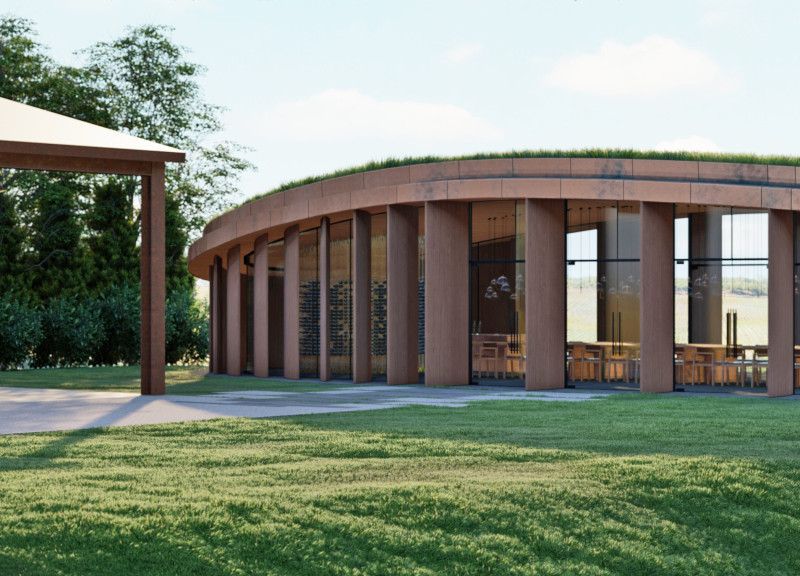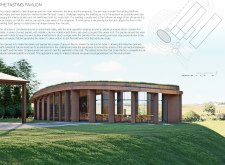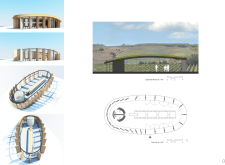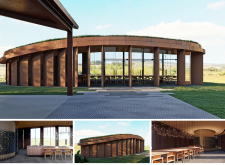5 key facts about this project
The Tasting Pavilion is designed to reflect the essence of wine culture while connecting harmoniously with the surrounding vineyards. Located at the edge of a sloping site, the pavilion offers striking views of the natural landscape. The concept focuses on transparency and functionality, allowing the building to act as a support for the wine tasting experience rather than competing with it.
Design Organization
The layout centers around a linear table designed for tastings and gatherings. Wrapping around this table is a wine expositor, which connects to a cylindrical volume that houses restroom facilities. This arrangement is efficient and practical, ensuring that visitors can easily navigate and interact with the space while enjoying the wine and its surroundings.
Rotating Panels
Key features include a series of wooden rotating panels that conceal underlying structural columns. These panels are important for controlling light within the pavilion, shielding wine bottles from direct sunlight to maintain their quality. The remaining panels stand upright against the glass walls, enhancing visibility for visitors and allowing natural light to flow in while also framing the vineyard views.
Green Roof and Earth Integration
The pavilion is topped with a green roof, designed to resemble an extension of the ground. This feature shelters the tasting room table below and reinforces the link between the architecture and the natural environment. The cylindrical volume, made from rammed earth, appears as if it has emerged from the soil. This design choice highlights the relationship between the land and the wine produced there.
Material Palette
Materials selected for the pavilion contribute to its overall narrative. Wooden panels are used alongside copper panels that cover the roof edges and natural stone tiles that make up the floor. Each material works to create a uniform aesthetic while ensuring a connection to the surrounding area. The choices emphasize a commitment to sustainability and enhance the tactile qualities of the space.
Natural light floods the interior, creating a warm atmosphere for visitors. The architectural form and careful detailing encourage guests to reflect on the land from which the wine is drawn.






















































